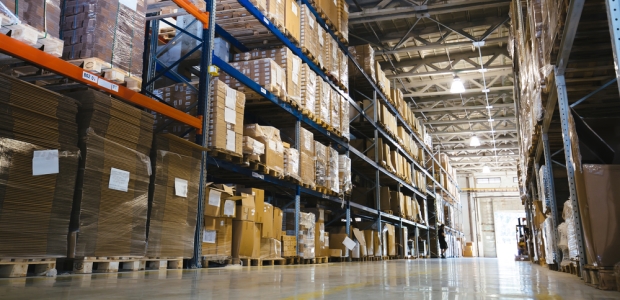
Greening an Industry We Had Never Heard Of
When it comes to green and sustainable businesses, we typically think of the hundreds of manufacturers creating products designed to have a reduced impact on the environment. However, another sector is also becoming more green and that is the industry that delivers these more environmentally responsible products.
"When you order something from, say, Amazon, you know it arrives on your doorstep in two days, but most people don't think about how," said George Prest, CEO of the logistics trade group Material Handling Industry (MHI). He adds that the field gets overlooked by new grads in particular, who think of supply-chain work -- if they think of it at all -- as "a guy driving a forklift in a dusty old factory."1
Well, it's not a dusty old industry any longer. The U.S. logistics business, more commonly known as the supply-chain or distribution industry, delivers an estimated 50 million tons of freight in the United States each year and is a $48 billion industry. It employs about 6 million people and is expected to add about 200,000 workers annually.1
This makes it a huge industry, and unfortunately, it has had a considerable negative impact on the environment over the years. But just like so many other industries, distribution is focusing much more on environmental issues. In some cases, this is due to new regulations both in North America and in Europe. However, many in the industry are "going green" on their own for one very good reason: Becoming more sustainable helps them operate in a leaner, more efficient manner. As a result, being more sustainable and environmentally responsible is proving to be a major cost savings.
Before we go any further, we should clarify one thing. When we use the terms "sustainable" or "sustainability," we are referring to ways organizations can reduce if not eliminate their demand for natural resources. We are not referring to the broader meaning, which encompasses the ways a company treats its employees or gives back to the community.
So how is the industry reducing its environmental footprint? Here are some of the key areas receiving renewed attention:
Transportation. As you might expect, transporting goods is at the top of our list. Yes, truck manufacturers are managing to produce more fuel-efficient, less polluting vehicles, but a lot depends on how these vehicles are driven. One step is to turn trucks off when not in use; leaving trucks idling is a very common practice, and it wastes fuel. Another step is to minimize acceleration and braking. The more times a truck has to slow down, the more fuel it has to use to accelerate. Reducing these ups and downs in travel speed can save considerable amounts of gasoline.
Route planning. While we could include route planning in the transportation category, this initiative has helped reduce fuel consumption so much, it deserves its own category. Many of the major freight carriers now use software programs that not only determine the fastest route from point A to point B, but also find delivery routes that minimize turns (especially left turns), traffic, warning hazards, and even speed traps. It takes less fuel to keep a truck rolling then making turns and dealing with heavy traffic.
Roofing. Many warehouse and distribution centers are massive facilities. The roofs on these locations can make a big difference in how much energy is needed to heat and cool the building. Roofs that are properly insulated with light-colored materials will reflect light and heat instead of absorbing it, making climate control much more affordable. Going a step further, installing vegetation on the roof provides additional insulation, absorbs carbon dioxide, and releases oxygen.
Lighting. Older distribution centers were typically built entirely dependent on electric lighting. Adding skylights and taking advantage of day lighting can help reduce the need for electric lighting. Low-wattage fluorescent or LED lighting and minimal exterior lighting further increase efficiency.
Closing doors. Many distribution centers leave loading dock doors open throughout the day, whether needed or not. Installing quick-open and quick-close docks helps reduce HVAC needs.
Equipment. Newer forklifts and similar equipment used in distribution centers are designed to use fuel and electricity more efficiently.
Water. Historically, water has been underpriced in the United States, but that is changing -- and fast. Rate increases for water now average 6 to 9 percent per year. In an industry that employs 6 million people, installing more water-efficient fixtures and systems is imperative to any sustainability program and will help mitigate these cost increases.
Finally, distribution houses throughout the country must adopt a daily mantra. This mantra should be easy to learn because it is only three words: Reduce, reuse, recycle. Reduce, reuse, recycle.
This refers to just about everything used in distribution, from packaging materials to ink cartridges to paper products. The more waste that can be reused or recycled, the more costs can be reduced and the more the industry can reduce its impact on the environment.
Michael Wilson is vice president of Marketing for AFFLINK, a global leader in supply chain optimization and developers of ELEVATE, providing clients with innovative process and procurement solutions to drive efficiencies in today’s leading businesses. He can be reached thru his company website at www.AFFLINK.com.
Referense
1. U.S. Bureau of Transportation Statistics; and "Wanted: 1.4 million new supply chain workers by 2018," by Anne Fisher, Forbes Magazine, May 1, 2014.